How to Avoid Legal Issues When Signing Home Construction Contracts
Signing a contract for a new home construction is pivotal for any homeowner. This document defines not just the timeline and costs but also the obligations and protections for both parties. Homeowners who fail to scrutinize the contract thoroughly often encounter disputes, unexpected expenses, or delays. You can minimize legal risks and secure a smoother building process by taking proactive measures. For those seeking expert insights into modern home construction practices, resources like Deutsche Startups provide guidance from experienced professionals on avoiding common pitfalls during the planning and building phases.
Clarify Scope of Work
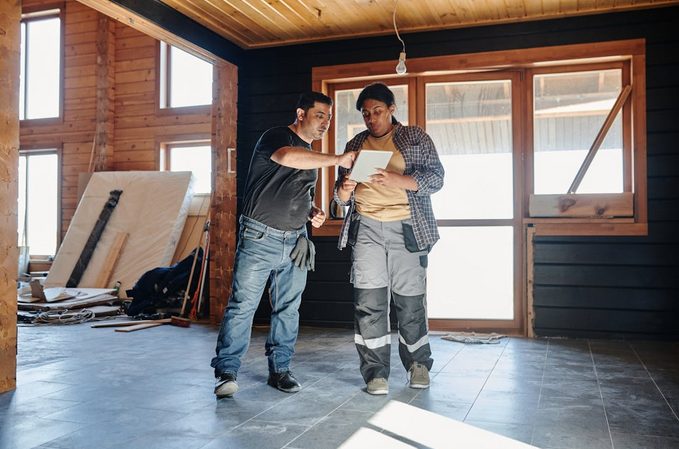
An ambiguous scope of work is one of the most common sources of legal issues in home construction contracts. A vague description of services can lead to disagreements about what is included, such as interior finishes, landscaping, or utility installations. Before signing, homeowners should demand a clear breakdown of every task, specifying materials, labor, and expected outcomes. Avoid contracts that leave room for assumptions or oral promises; anything not written may be difficult to enforce later. Defining the scope thoroughly prevents misunderstandings and ensures both parties have a common understanding of the project.
Review Payment Terms Carefully
 Payment structures in home construction contracts often trigger disputes. Homeowners may face legal challenges if payments are tied to ambiguous milestones or excessive advance payments. Contracts should outline the exact schedule, amounts, and conditions for releasing funds. Additionally, clauses regarding late payments, interest, or penalties should be transparent. Avoid agreements that allow the contractor to modify payment schedules unilaterally, as this can create grounds for disputes or financial strain. A well-defined payment plan safeguards your investment and reduces the potential for legal confrontation.
Payment structures in home construction contracts often trigger disputes. Homeowners may face legal challenges if payments are tied to ambiguous milestones or excessive advance payments. Contracts should outline the exact schedule, amounts, and conditions for releasing funds. Additionally, clauses regarding late payments, interest, or penalties should be transparent. Avoid agreements that allow the contractor to modify payment schedules unilaterally, as this can create grounds for disputes or financial strain. A well-defined payment plan safeguards your investment and reduces the potential for legal confrontation.
Examine Change and Termination Clauses
Changes to a construction project are almost inevitable, but modifications can result in conflicts without proper documentation. Contracts must specify how changes are proposed, approved, and billed. Failure to establish clear procedures for amendments may lead to unapproved work, unexpected charges, or delays. Termination clauses also deserve close attention. Understand under which circumstances you or the contractor can end the contract and the financial implications of such decisions. Properly drafted change and termination clauses provide flexibility while limiting exposure to legal disputes.
Check Compliance and Liability Provisions

Construction contracts often include clauses related to building codes, permits, and insurance. Legal problems can arise if responsibilities for obtaining permits or meeting regulatory requirements are not clearly assigned. Liability clauses are equally important, defining who is accountable for defects, accidents, or damages during and after construction. Homeowners should ensure the contract clearly allocates responsibility and that the contractor maintains adequate insurance coverage. Confirming compliance and liability provisions prevents potential lawsuits and protects both your property and financial interests.
Avoiding legal issues when signing a home construction contract requires careful attention to detail. Homeowners should focus on four key areas: clarifying the scope of work, reviewing payment terms, examining change and termination clauses, and verifying compliance and liability provisions. Addressing these factors before signing minimizes the risk of disputes, unexpected costs, and delays. A well-structured contract offers clarity, accountability, and protection, empowering homeowners to proceed confidently and maintain a positive relationship with their construction partners.…

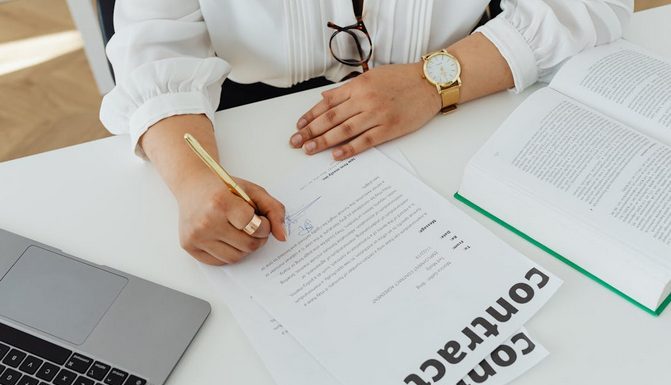
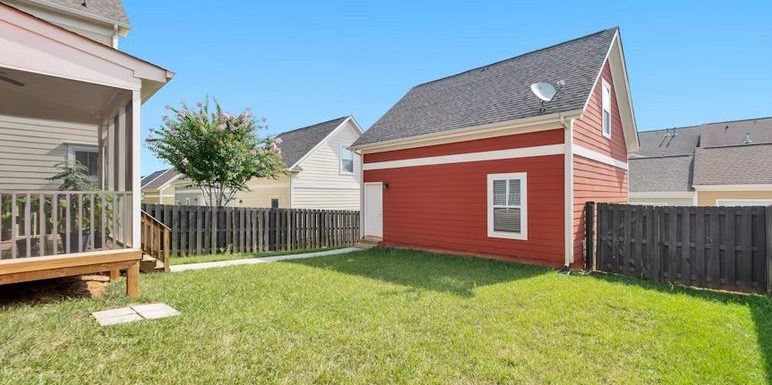
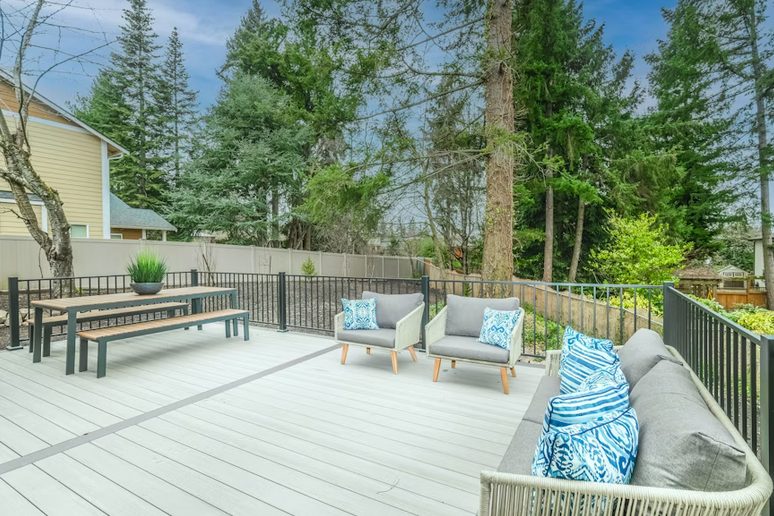
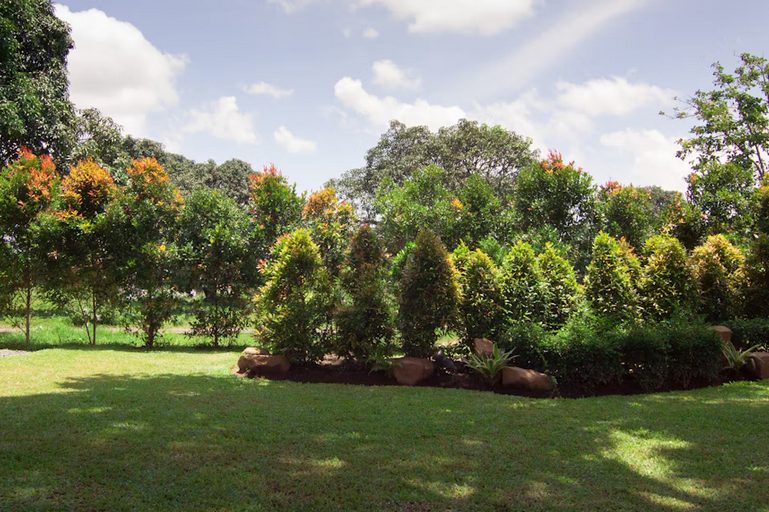
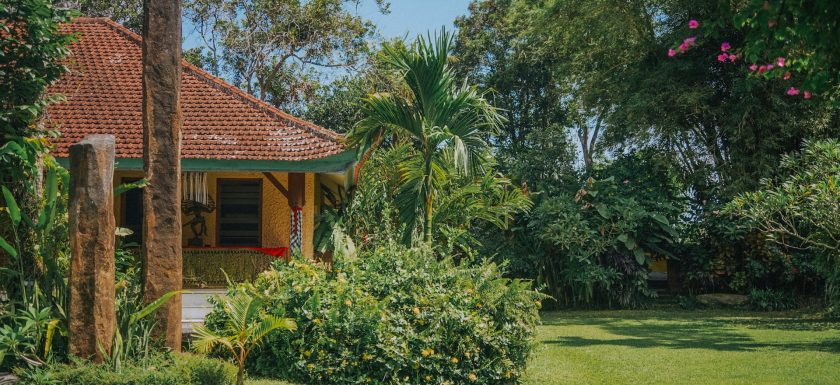
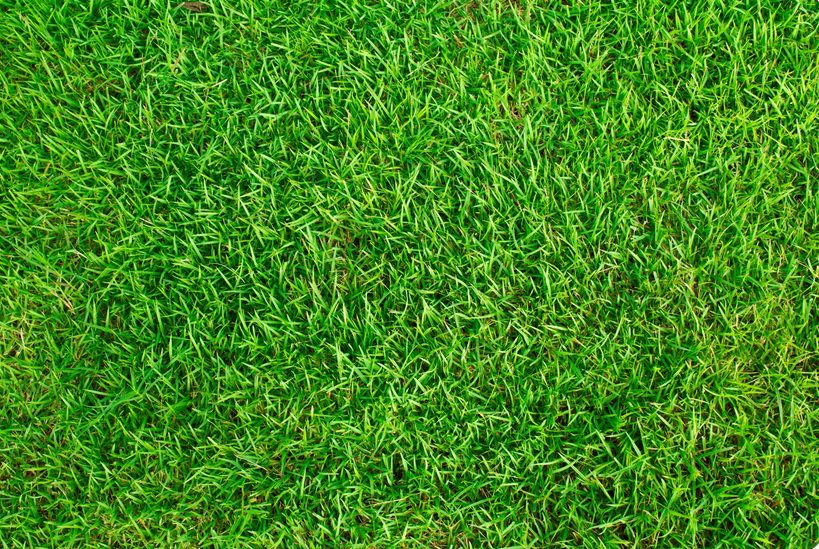 Grass alone often doesn’t hold up under constant pet activity, especially if your pets love to run or dig. One common error is relying on high-maintenance or delicate lawn varieties that quickly turn patchy. Choose tougher, pet-resistant grass like Bermuda or consider replacing some areas with durable alternatives like pea gravel, artificial turf, or decomposed granite. These materials are easier to clean and hold up well under paws, reducing wear and muddy messes.
Grass alone often doesn’t hold up under constant pet activity, especially if your pets love to run or dig. One common error is relying on high-maintenance or delicate lawn varieties that quickly turn patchy. Choose tougher, pet-resistant grass like Bermuda or consider replacing some areas with durable alternatives like pea gravel, artificial turf, or decomposed granite. These materials are easier to clean and hold up well under paws, reducing wear and muddy messes.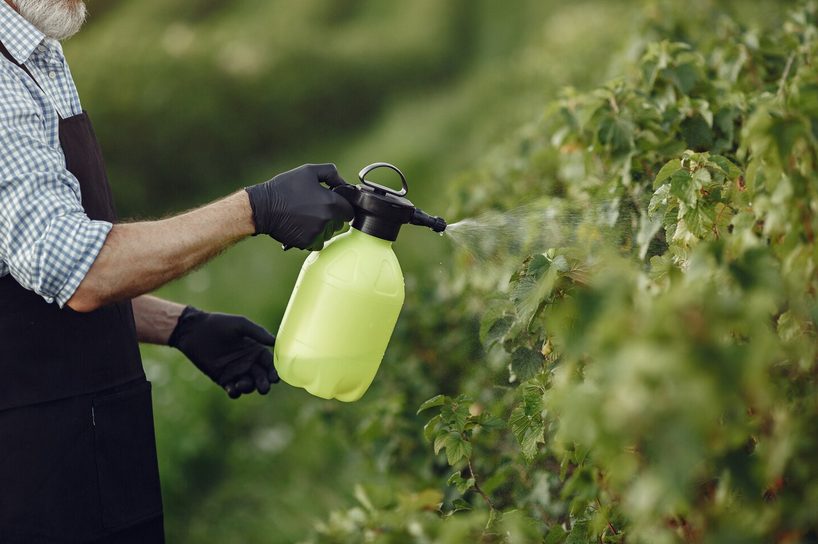
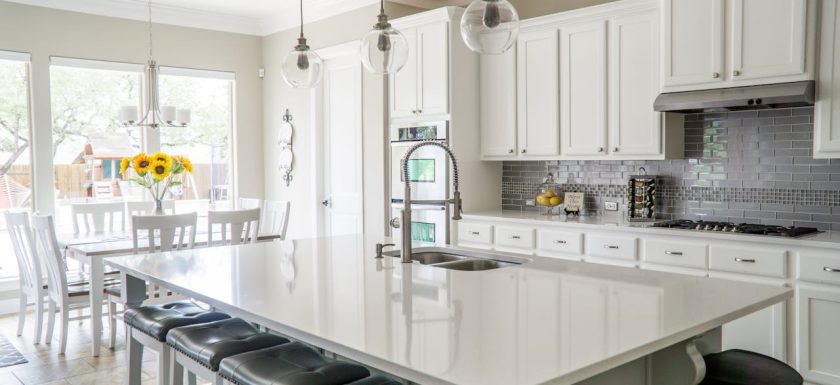
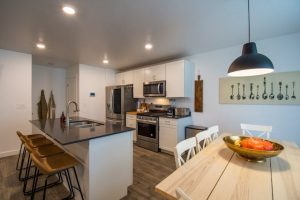 Modern decor thrives on simplicity. Clean lines, smooth surfaces, and a lack of clutter help keep the space calm and efficient. Start by removing anything you don’t need. Clear countertops set the tone. Keep only items that serve a purpose or add visual value. Cabinet design should follow the same principle. Flat panels or handleless cabinets give your kitchen a sleek appearance. The goal is to reduce visual noise while keeping everything accessible and functional.
Modern decor thrives on simplicity. Clean lines, smooth surfaces, and a lack of clutter help keep the space calm and efficient. Start by removing anything you don’t need. Clear countertops set the tone. Keep only items that serve a purpose or add visual value. Cabinet design should follow the same principle. Flat panels or handleless cabinets give your kitchen a sleek appearance. The goal is to reduce visual noise while keeping everything accessible and functional.



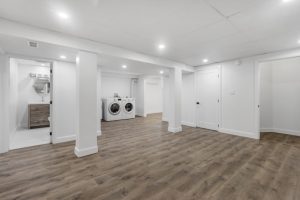 Your foundation is the backbone of your home. Any water intrusion can undermine its integrity. Over time, moisture weakens the soil beneath your house, leading to shifting and settling. Cracks may appear in walls or floors as a result. These are not just cosmetic issues; they signal deeper problems with structural stability. A compromised foundation can lead to significant repair costs that escalate quickly. In severe cases, it could even make parts of your home uninhabitable. The longer you wait to address basement leaks, the more extensive the damage becomes. You might find yourself facing expensive repairs that could have been avoided with timely intervention.
Your foundation is the backbone of your home. Any water intrusion can undermine its integrity. Over time, moisture weakens the soil beneath your house, leading to shifting and settling. Cracks may appear in walls or floors as a result. These are not just cosmetic issues; they signal deeper problems with structural stability. A compromised foundation can lead to significant repair costs that escalate quickly. In severe cases, it could even make parts of your home uninhabitable. The longer you wait to address basement leaks, the more extensive the damage becomes. You might find yourself facing expensive repairs that could have been avoided with timely intervention. Dealing with
Dealing with 


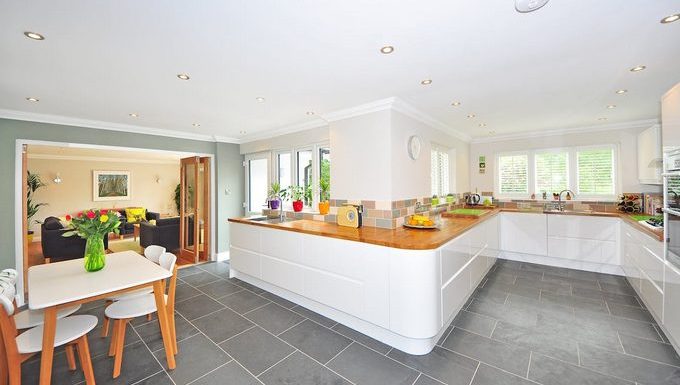















 One of the primary services offered by professional roofing contractors is roof installation. Whether you’re constructing a new home or replacing an existing roof, these experts can guide you through the process from start to finish. They will assess your needs, recommend appropriate materials based on your preferences and budget, and ensure the installation is done correctly and efficiently. Professional roofers are familiar with various roofing systems, such as asphalt shingles, metal roofs, tile roofs, or flat roofs.
One of the primary services offered by professional roofing contractors is roof installation. Whether you’re constructing a new home or replacing an existing roof, these experts can guide you through the process from start to finish. They will assess your needs, recommend appropriate materials based on your preferences and budget, and ensure the installation is done correctly and efficiently. Professional roofers are familiar with various roofing systems, such as asphalt shingles, metal roofs, tile roofs, or flat roofs. Maintaining your roof plays a crucial role in its longevity and performance. Professional roofing contractors offer roof maintenance services to keep your roof in optimal condition. This includes regular inspections to identify potential issues, cleaning debris or moss accumulating on the roof, and ensuring proper drainage to prevent water pooling. Regular maintenance helps extend your roof’s lifespan, prevent costly repairs, and ensure that your roof continues to provide adequate protection for your home.
Maintaining your roof plays a crucial role in its longevity and performance. Professional roofing contractors offer roof maintenance services to keep your roof in optimal condition. This includes regular inspections to identify potential issues, cleaning debris or moss accumulating on the roof, and ensuring proper drainage to prevent water pooling. Regular maintenance helps extend your roof’s lifespan, prevent costly repairs, and ensure that your roof continues to provide adequate protection for your home.
 In-ground lights are an excellent way to illuminate your pool area and create a subtle yet elegant ambiance. From round to square fixtures, these bright little guys can be installed flush with the ground around the perimeter of your pool. One great idea for in-ground lighting is to use them as markers along walkways leading up to your pool. This will not only add some much-needed illumination but also help guide guests safely through the space. Installing colored LED lights inside in-ground fixtures that can change colors throughout the night can boost the fun.
In-ground lights are an excellent way to illuminate your pool area and create a subtle yet elegant ambiance. From round to square fixtures, these bright little guys can be installed flush with the ground around the perimeter of your pool. One great idea for in-ground lighting is to use them as markers along walkways leading up to your pool. This will not only add some much-needed illumination but also help guide guests safely through the space. Installing colored LED lights inside in-ground fixtures that can change colors throughout the night can boost the fun.
 One of the most striking pool lighting ideas is undoubtedly the use of underwater lights. These fixtures create a magical and serene ambiance for swimmers to enjoy, especially after dark. One popular type of underwater light is called color-changing LEDs, as mentioned before. As their name implies, these bulbs allow you to switch between different hues, such as blue, green, red, or white, with just a click of remote control. And the best part is they highlight the
One of the most striking pool lighting ideas is undoubtedly the use of underwater lights. These fixtures create a magical and serene ambiance for swimmers to enjoy, especially after dark. One popular type of underwater light is called color-changing LEDs, as mentioned before. As their name implies, these bulbs allow you to switch between different hues, such as blue, green, red, or white, with just a click of remote control. And the best part is they highlight the 
 One of the most surprising facts about prefabricated wooden houses is that the construction techniques date back over 100 years. In fact, the first ever prefabricated homes were built in America during the late 1800s. These homes were designed to be quickly assembled and then disassembled so they could be easily transported to different locations. This made them perfect for people moving around a lot, such as miners and railroad workers. In fact, they were once only available to the wealthy.
One of the most surprising facts about prefabricated wooden houses is that the construction techniques date back over 100 years. In fact, the first ever prefabricated homes were built in America during the late 1800s. These homes were designed to be quickly assembled and then disassembled so they could be easily transported to different locations. This made them perfect for people moving around a lot, such as miners and railroad workers. In fact, they were once only available to the wealthy.
 What many people miss to know is the fact that prefabricated
What many people miss to know is the fact that prefabricated 

 if you want your home to reflect your personality, you need to source unique pieces of furniture. This could mean anything from a vintage armchair to a hand-painted dresser. The key is choosing pieces you love that will make your home feel one-of-a-kind. Not only will this add personality to your space, but it will also make it feel more inviting and comfortable.
if you want your home to reflect your personality, you need to source unique pieces of furniture. This could mean anything from a vintage armchair to a hand-painted dresser. The key is choosing pieces you love that will make your home feel one-of-a-kind. Not only will this add personality to your space, but it will also make it feel more inviting and comfortable. Finally, one of the best ways to add personality to your home design is by experimenting with color and print. It could mean anything from painting a bold accent wall to hanging patterned curtains. It is essential to have fun with it and not be afraid to experiment. After all, this is your home – so make it a reflection of you! We hope you enjoyed these tips on creating a home design that reflects your personality.
Finally, one of the best ways to add personality to your home design is by experimenting with color and print. It could mean anything from painting a bold accent wall to hanging patterned curtains. It is essential to have fun with it and not be afraid to experiment. After all, this is your home – so make it a reflection of you! We hope you enjoyed these tips on creating a home design that reflects your personality.
 One of the best ways to secure your office building is to install security cameras and alarms. This will deter criminals from breaking into your office, and it will also give you a way to monitor what is going on inside your building. You can even set up alerts so that you are notified if something suspicious is happening. Another good idea is to install some type of security system that requires a badge or key card to enter. This will make it so that only authorized personnel can enter the building, and it will also make it more difficult for criminals to get inside. You may even want to consider hiring security guards to patrol the premises.
One of the best ways to secure your office building is to install security cameras and alarms. This will deter criminals from breaking into your office, and it will also give you a way to monitor what is going on inside your building. You can even set up alerts so that you are notified if something suspicious is happening. Another good idea is to install some type of security system that requires a badge or key card to enter. This will make it so that only authorized personnel can enter the building, and it will also make it more difficult for criminals to get inside. You may even want to consider hiring security guards to patrol the premises. You should make sure that important documents and valuable items are in a safe place. This will help prevent them from being stolen, and it will also make it more difficult for criminals to access them. Now that you know how to secure your office building, put these tips into practice and make sure that your workplace is as safe as possible.…
You should make sure that important documents and valuable items are in a safe place. This will help prevent them from being stolen, and it will also make it more difficult for criminals to access them. Now that you know how to secure your office building, put these tips into practice and make sure that your workplace is as safe as possible.…
 One of the simplest ways to make your home appliances last longer is to clean them regularly. This includes vacuuming and dusting the inside and outside of the appliance. If you don’t clean them regularly, dirt and dust will build up and can cause the appliance to overheat or break down. Some appliances are very easy to clean, like the vacuum cleaner. Others, like the dishwasher, can be a little more difficult. Be sure to read the owner’s manual, so you know how to clean the appliance properly.
One of the simplest ways to make your home appliances last longer is to clean them regularly. This includes vacuuming and dusting the inside and outside of the appliance. If you don’t clean them regularly, dirt and dust will build up and can cause the appliance to overheat or break down. Some appliances are very easy to clean, like the vacuum cleaner. Others, like the dishwasher, can be a little more difficult. Be sure to read the owner’s manual, so you know how to clean the appliance properly. It’s also a good idea to conduct regular inspections of your appliances. This will help you catch any small problems before they turn into big ones. If you’re not sure how to inspect a device, consult the manufacturer’s instructions or a qualified technician. If you do not know anything about the appliance, do not try to fix it yourself. You could make the problem worse and cost you more money in the long run. It is best to contact someone that knows.
It’s also a good idea to conduct regular inspections of your appliances. This will help you catch any small problems before they turn into big ones. If you’re not sure how to inspect a device, consult the manufacturer’s instructions or a qualified technician. If you do not know anything about the appliance, do not try to fix it yourself. You could make the problem worse and cost you more money in the long run. It is best to contact someone that knows.
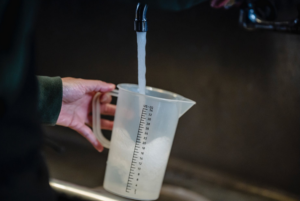 One of the essential benefits of having a water filtration system is that you and your family will be drinking clean and safe water. A good quality water filter can remove impurities, chemicals, and other contaminants from your water supply. It means that you’ll no longer have to worry about the health risks associated with drinking contaminated water. The contaminants may include lead, arsenic, chlorine, and other harmful chemicals. Water filters also remove bad tastes and odors from water, so you’ll be able to enjoy drinking glasses of cold water without having to worry about the taste.
One of the essential benefits of having a water filtration system is that you and your family will be drinking clean and safe water. A good quality water filter can remove impurities, chemicals, and other contaminants from your water supply. It means that you’ll no longer have to worry about the health risks associated with drinking contaminated water. The contaminants may include lead, arsenic, chlorine, and other harmful chemicals. Water filters also remove bad tastes and odors from water, so you’ll be able to enjoy drinking glasses of cold water without having to worry about the taste. Another reason to have a water filtration system is that you’ll save money on bottled water. It’s no secret that bottled water is expensive, and it’s becoming increasingly difficult to find affordable quality bottled water.
Another reason to have a water filtration system is that you’ll save money on bottled water. It’s no secret that bottled water is expensive, and it’s becoming increasingly difficult to find affordable quality bottled water. One final reason to install a water filtration system is that it can help reduce the amount of buildup in your plumbing system. A good quality filter can remove sediment and other debris from the water, which will help to keep your pipes and drains clear. It is essential if you live in an area with hard water. A water filtration system can help prevent the buildup of limescale and other deposits that can cause problems with your plumbing system.
One final reason to install a water filtration system is that it can help reduce the amount of buildup in your plumbing system. A good quality filter can remove sediment and other debris from the water, which will help to keep your pipes and drains clear. It is essential if you live in an area with hard water. A water filtration system can help prevent the buildup of limescale and other deposits that can cause problems with your plumbing system.
 One of the best ways to make your living room more relaxing is adding a comfortable couch. The couch must be well-cushioned so you can truly relax into it. Make sure to pick out a color and style that you love, as this will help you feel good when you’re relaxing in your living room. A couch can also be a great place to take a nap.
One of the best ways to make your living room more relaxing is adding a comfortable couch. The couch must be well-cushioned so you can truly relax into it. Make sure to pick out a color and style that you love, as this will help you feel good when you’re relaxing in your living room. A couch can also be a great place to take a nap. Adding plants to your living room is a great way to make it feel more relaxing and zen. Not only do they help to clean the air, but they can also be calming to look at. If you don’t have a lot of natural light in your living room, consider adding some artificial plants instead. They won’t provide the same benefits, but they’ll still help make the room feel more relaxed.
Adding plants to your living room is a great way to make it feel more relaxing and zen. Not only do they help to clean the air, but they can also be calming to look at. If you don’t have a lot of natural light in your living room, consider adding some artificial plants instead. They won’t provide the same benefits, but they’ll still help make the room feel more relaxed.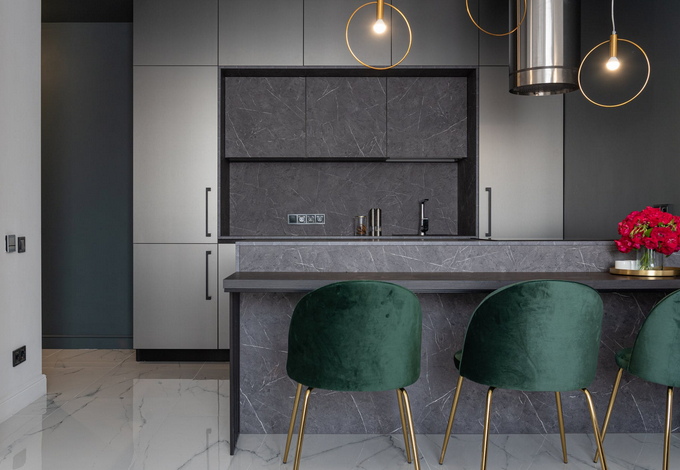
 One of the best ways to save money is by spending less on groceries. This can be done in a few different ways. Try shopping at stores that offer lower prices, cooking more meals at home, and buying generic brands instead of name brands.
One of the best ways to save money is by spending less on groceries. This can be done in a few different ways. Try shopping at stores that offer lower prices, cooking more meals at home, and buying generic brands instead of name brands. It is very important to turn off lights when you are not using them. This will help keep your home cooler during the summer, and it can also save money on your electric bill. It may seem like a little thing, but this easy step could be making a big difference, and according to a study, turning off lights when not in use can save you up to $100 a year. This is one of the things that some homeowners usually neglect.
It is very important to turn off lights when you are not using them. This will help keep your home cooler during the summer, and it can also save money on your electric bill. It may seem like a little thing, but this easy step could be making a big difference, and according to a study, turning off lights when not in use can save you up to $100 a year. This is one of the things that some homeowners usually neglect.
 It is always best to look for experienced plumbers in your area. It is good to rely on young workers and those with new ideas and revolutions. But it is better to rely on the work of experienced plumbers.
It is always best to look for experienced plumbers in your area. It is good to rely on young workers and those with new ideas and revolutions. But it is better to rely on the work of experienced plumbers. All criteria are considered, but our bottom line will remain price. Sometimes we compromise on all of these aspects to choose the cheapest local plumber. Most people will accept service if the cost is affordable, even if it is not exceptional. You have to keep in mind that not all quality services are available at all prices. The same goes for the cheapest provider, which is not always the best. However, sometimes we pay more for cheaper services. Premium companies can invest in the best tools and staff, which makes them more expensive, but it’s worth it.
All criteria are considered, but our bottom line will remain price. Sometimes we compromise on all of these aspects to choose the cheapest local plumber. Most people will accept service if the cost is affordable, even if it is not exceptional. You have to keep in mind that not all quality services are available at all prices. The same goes for the cheapest provider, which is not always the best. However, sometimes we pay more for cheaper services. Premium companies can invest in the best tools and staff, which makes them more expensive, but it’s worth it.
 Research shows that
Research shows that  There are many other health benefits. Remember that more than half of all Americans are dehydrated. Most people do not drink enough water. Even if you drink tap, bottled, or reasonably filtered water, you can become dehydrated. It can lead to obesity and other health problems like artery disease, cholesterol problems, heartburn, acid reflux, cancer, and even heart attacks.
There are many other health benefits. Remember that more than half of all Americans are dehydrated. Most people do not drink enough water. Even if you drink tap, bottled, or reasonably filtered water, you can become dehydrated. It can lead to obesity and other health problems like artery disease, cholesterol problems, heartburn, acid reflux, cancer, and even heart attacks.
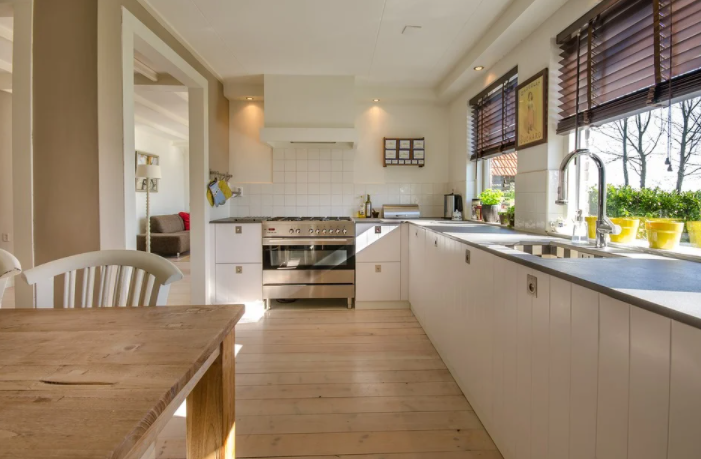

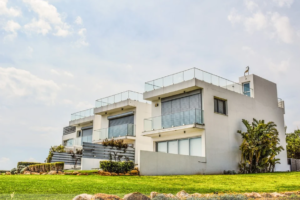 Homeowners think of home remodeling projects as do-it-yourself jobs. Opt for a recommended contractor who will add new design elements to the lawn area and improve the curb appeal of your home. Before meeting with a contractor, make a list of the elements you want to renovate. It is imperative to meet with a few contractors before deciding on one. Don’t forget to discuss your expectations. Therefore, take some time to beautify and strengthen the exterior of your home.
Homeowners think of home remodeling projects as do-it-yourself jobs. Opt for a recommended contractor who will add new design elements to the lawn area and improve the curb appeal of your home. Before meeting with a contractor, make a list of the elements you want to renovate. It is imperative to meet with a few contractors before deciding on one. Don’t forget to discuss your expectations. Therefore, take some time to beautify and strengthen the exterior of your home.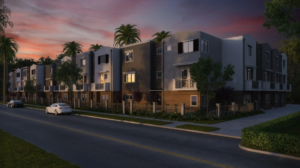

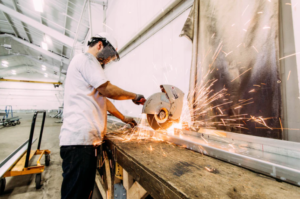 The most important benefit of picking a
The most important benefit of picking a 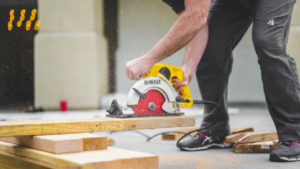 Unlike big builders, local contractors will need to be conscious of their support quality, impacting their standing. It occurs because word travels fast, so if the customer sees and finds their work, they could alert others. A giant roofing contractor has lots of customers and can dismiss numerous complaints. All it requires is cluttered work or shoddy service for a town to understand its lack of professionalism. If you reside in the communities that you serve, you ought to be diligent, thorough, and detail-oriented so that clients are satisfied and feel much more inclined to irritate you.
Unlike big builders, local contractors will need to be conscious of their support quality, impacting their standing. It occurs because word travels fast, so if the customer sees and finds their work, they could alert others. A giant roofing contractor has lots of customers and can dismiss numerous complaints. All it requires is cluttered work or shoddy service for a town to understand its lack of professionalism. If you reside in the communities that you serve, you ought to be diligent, thorough, and detail-oriented so that clients are satisfied and feel much more inclined to irritate you.
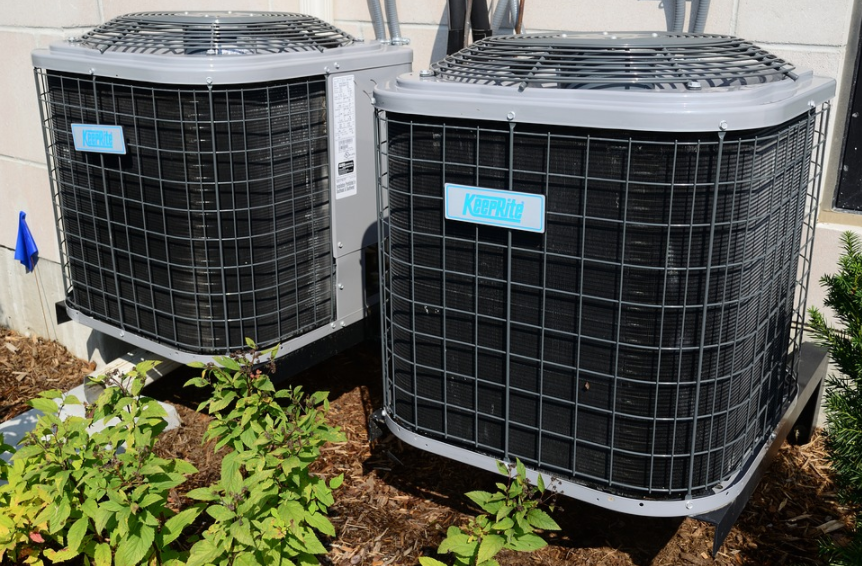

 Nobody has to think like they are providing a hefty sack when you’d love to wash your house. Furthermore, manufacturers specializing in this kind of technology resemble to have caught up with this truth. However, it’s your prerogative to determine what is light-weight to you. Vacuum cleaners employing a self-propulsion mechanism can proceed off as more valuable for you.
Nobody has to think like they are providing a hefty sack when you’d love to wash your house. Furthermore, manufacturers specializing in this kind of technology resemble to have caught up with this truth. However, it’s your prerogative to determine what is light-weight to you. Vacuum cleaners employing a self-propulsion mechanism can proceed off as more valuable for you.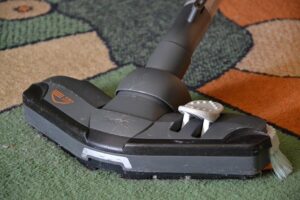 Sometimes, when dust appears to access the filter system, the vacuum cleaner is likely to crack. A guarantee will be becoming, as you don’t have to always rush into the local shop to buy a brand new one. Neither will you have to undergo the further cost of calling a technician to improve it.
Sometimes, when dust appears to access the filter system, the vacuum cleaner is likely to crack. A guarantee will be becoming, as you don’t have to always rush into the local shop to buy a brand new one. Neither will you have to undergo the further cost of calling a technician to improve it.
 Living in flats means making the perfect balance between place, availability, and surroundings. Are there good schools and schools nearby? How much can your local park price? These are a few of the questions you might want to ask your supervisor before moving into a flat.
Living in flats means making the perfect balance between place, availability, and surroundings. Are there good schools and schools nearby? How much can your local park price? These are a few of the questions you might want to ask your supervisor before moving into a flat. Virtually all luxury flats have to be assessed by trained security staff before leasing or investing. In the event of a fire, the construction needs to have a sizable fire group. Many women and men prefer to reside in guarded luxury flats, as safety gains in each apartment. Since access is restricted, no foreigners can roam the region resulting in difficulties or damaging any land.
Virtually all luxury flats have to be assessed by trained security staff before leasing or investing. In the event of a fire, the construction needs to have a sizable fire group. Many women and men prefer to reside in guarded luxury flats, as safety gains in each apartment. Since access is restricted, no foreigners can roam the region resulting in difficulties or damaging any land. Night lodging. Learn as much as you can about parking, as an instance, any extra expenses. With this advice, you may start looking for some of the very best luxury apartments that fit your lifestyle. Make an educated choice, have fun searching for an apartment! Another vital characteristic for occupants of luxury flats is the protection of the vehicles. Garages are given in convenient regions of the website. You may enjoy using a parking kit to secure your car or truck from harm due to another vehicle. Additionally, there’s a substantial likelihood that a different vehicle will unintentionally touch your vehicle and cause scratches and scratches or harm it at all.…
Night lodging. Learn as much as you can about parking, as an instance, any extra expenses. With this advice, you may start looking for some of the very best luxury apartments that fit your lifestyle. Make an educated choice, have fun searching for an apartment! Another vital characteristic for occupants of luxury flats is the protection of the vehicles. Garages are given in convenient regions of the website. You may enjoy using a parking kit to secure your car or truck from harm due to another vehicle. Additionally, there’s a substantial likelihood that a different vehicle will unintentionally touch your vehicle and cause scratches and scratches or harm it at all.…